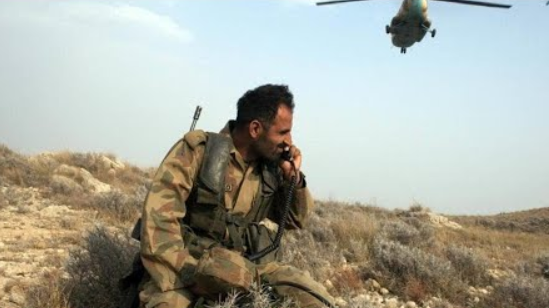KARACHI/BAJAUR — As fears of another military campaign loom in Pakistan’s northwest, anxiety is mounting far beyond the frontlines. For dockworker Muhammad Hafeez, the port in Karachi may be his workplace, but his heart and mind are fixed on his native village in Bajaur, where another chapter in the country’s long war with militancy appears ready to unfold.
In Bajaur’s Loi Mamond area, like many parts of the former tribal belt along the Afghan border, the air is thick with tension. Recent weeks have seen a resurgence of violence — high-profile assassinations, deadly ambushes, and bombings — prompting the state to launch Operation Sarbakaf, targeting the Tehreek-i-Taliban Pakistan (TTP) and Islamic State Khorasan Province (ISKP), both of which are reportedly regrouping in the region.
Civilians Brace for the Fallout
Fearing the worst, Hafeez, like many others, has urged his family to leave. “No one wants to go through that nightmare again,” he said, referring to the mass displacements triggered by earlier operations like Zarb-e-Azb in 2014. Over 1,200 families have already registered as displaced, while many others are leaving unregistered — quietly, and with whatever they can carry.
Memories of past evacuations — families fleeing on foot, homes reduced to rubble, lives upended — remain etched in the collective psyche of the region. The trauma is still raw, and so is the distrust of both militants and the state.
A Fragile Attempt at Dialogue
In a bid to prevent another wave of civilian suffering, tribal elders and local political figures have stepped in. A jirga, led by former MNA and Jamaat-e-Islami leader Sahibzada Haroon Rasheed, is trying to mediate between the state and the TTP.
According to sources familiar with the talks, militants have been offered two choices: return to Afghanistan or retreat into the mountains — effectively vacating populated areas. But negotiations are slow and mired in logistical delays, including suspended mobile networks. Neither side seems to have final authority, with the TTP needing clearance from leadership in Afghanistan, and local mediators deferring to federal agencies.
These backchannel efforts aren’t limited to Bajaur. Similar mediation is unfolding in North Waziristan and Khyber’s Tirah Valley. The overarching goal: avoid war through dialogue — even if fragile and temporary.
Political Stakes and State Messaging
The provincial government, led by KP Chief Minister Ali Amin Gandapur, is resisting calls for a military operation. Gandapur, a key figure in the PTI, has been publicly warned by Imran Khan — still the party’s moral nucleus despite imprisonment — not to allow war to return to KP.
Meanwhile, the federal government is applying pressure. Minister of State for Interior Talal Chaudhry recently warned provincial governments to fulfill their responsibilities against terrorism, suggesting Islamabad’s patience is running thin.
Yet, while officials in Islamabad have commented broadly on the terrorism surge, they’ve remained conspicuously silent on the jirga-led peace initiatives — a sign perhaps of internal disagreement, or calculated ambiguity.
A Familiar Pattern, a Dangerous Cycle
Analysts note this isn’t new. The Pakistani state has often opted for negotiation before going in with force — a tactic that serves both to claim moral high ground and to prepare public opinion for eventual military action.
“In most cases, these talks are more about optics than substance,” said journalist Fakhar Kakakhel, who has covered every major counterinsurgency in the region. “Militants rarely uphold their side of the bargain, which then allows the state to act with broader support.”
Kakakhel pointed to ideological differences between various militant factions. In southern KP, groups like the Hafiz Gul Bahadur faction — largely Deobandi — have shown more willingness to honor truces, often due to strong local clerical influence. In contrast, Salafi-Panjpiri militants in Bajaur, Mohmand, and Swat have consistently rejected state legitimacy and broken agreements.
Ground Zero: The Rise of the Insurgency
According to the Global Terrorism Index 2025, Pakistan now ranks as the second most terrorism-affected country in the world — behind only Burkina Faso. The numbers are stark: over 1,000 terror-related deaths in 2024, with attacks more than doubling year-over-year.
The roots of this crisis are multifaceted. Domestically, banned outfits like TTP and BLA are exploiting political instability and economic despair. Regionally, the Taliban’s return to power in Afghanistan has emboldened Pakistan-based insurgents. Globally, a shifting security environment — with minimal external pressure on Afghanistan’s Taliban regime — has allowed these networks space to breathe and regroup.
The Khyber Precedent — A Deal, or Just a Pause?
While Bajaur waits for a breakthrough, an agreement has already been struck in Khyber district. The TTP’s central council reportedly agreed to stop extortion and kidnappings and to avoid attacks — unless provoked by security forces. But the militants didn’t agree to withdraw, raising serious concerns about the long-term viability of the deal.
Critics warn that this sets a troubling precedent: allowing armed groups to retain territorial influence in exchange for temporary calm. It’s a gamble — and one with a high cost if it fails.
Stuck Between Peace Talks and War Drums
For now, the people of Bajaur — and the wider tribal belt — remain in limbo. Talk of peace offers a flicker of hope, but history casts a long shadow. Agreements with militant groups in the past have consistently unraveled, and the threat of another round of violence and displacement hangs heavy.
“They want peace, but not at the cost of surrendering their land to militants again,” said a Peshawar-based law enforcement officer. “At the same time, they fear what another military operation could bring — destruction, again.”

